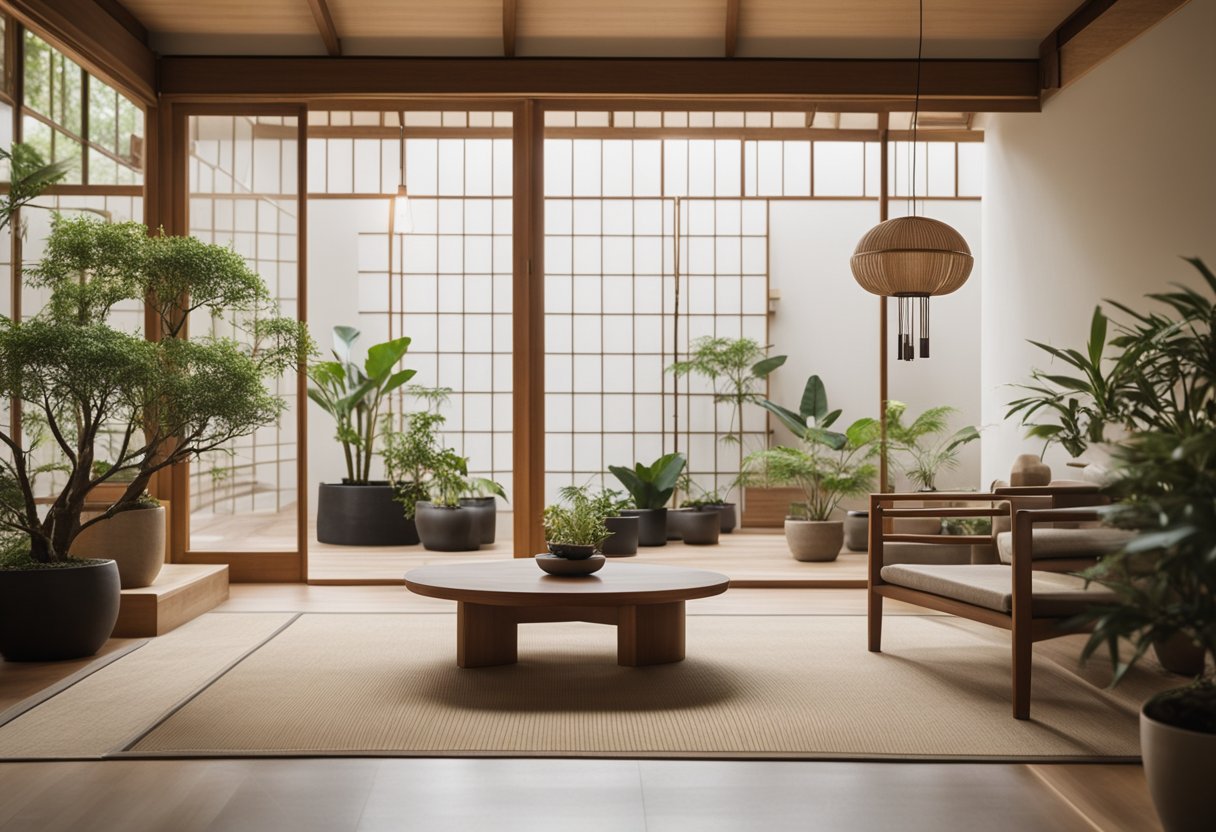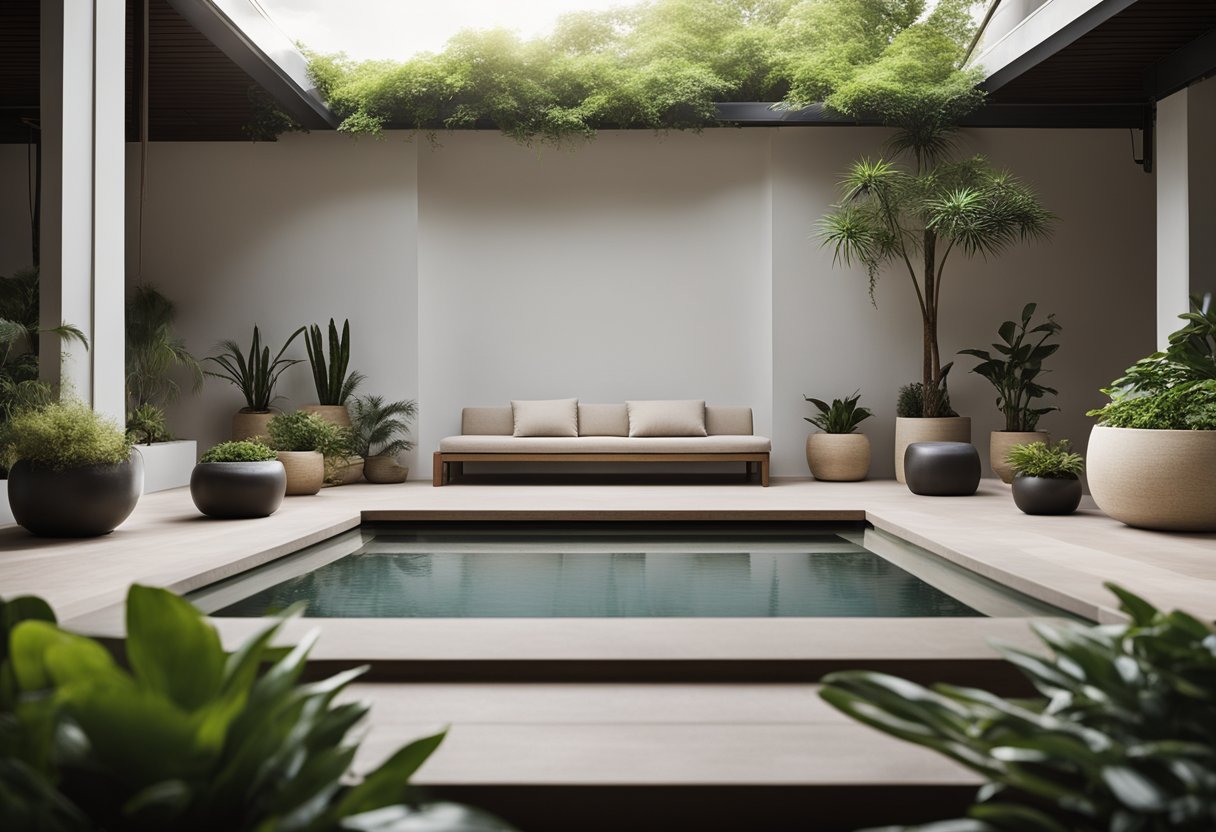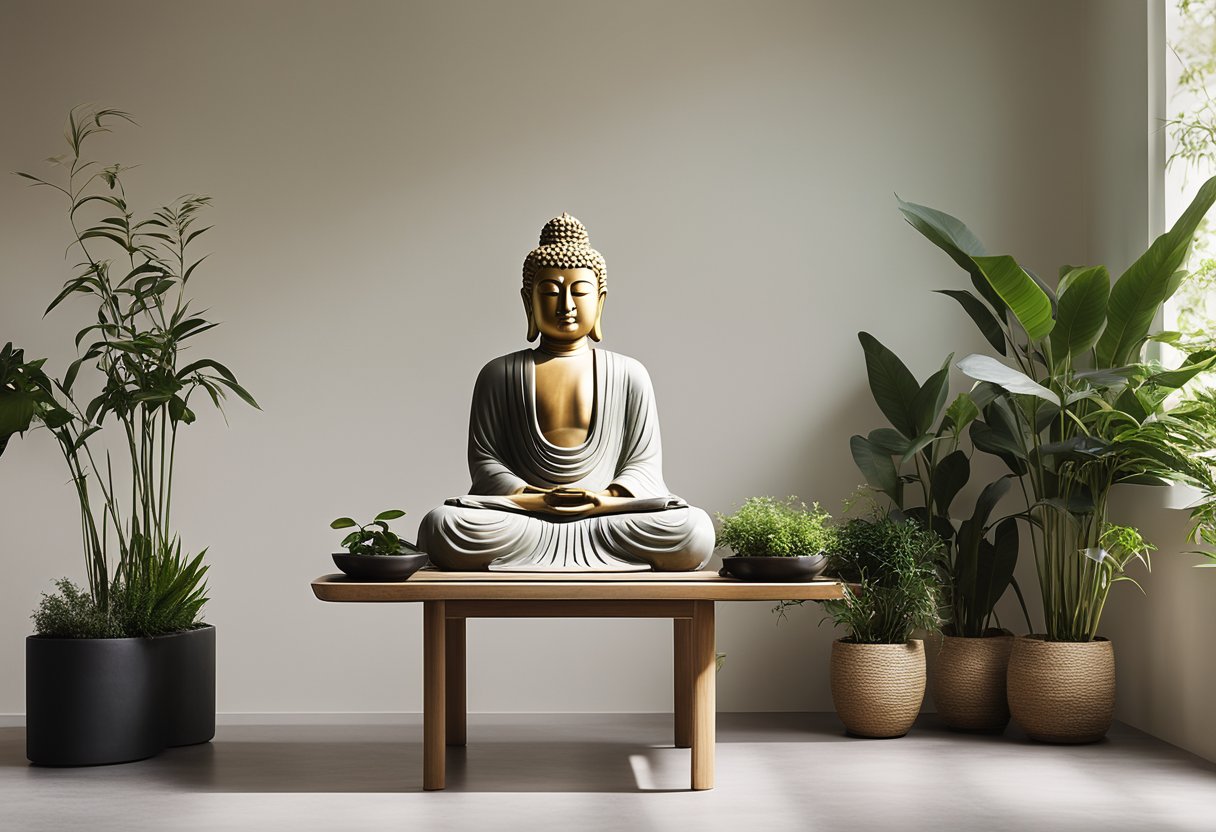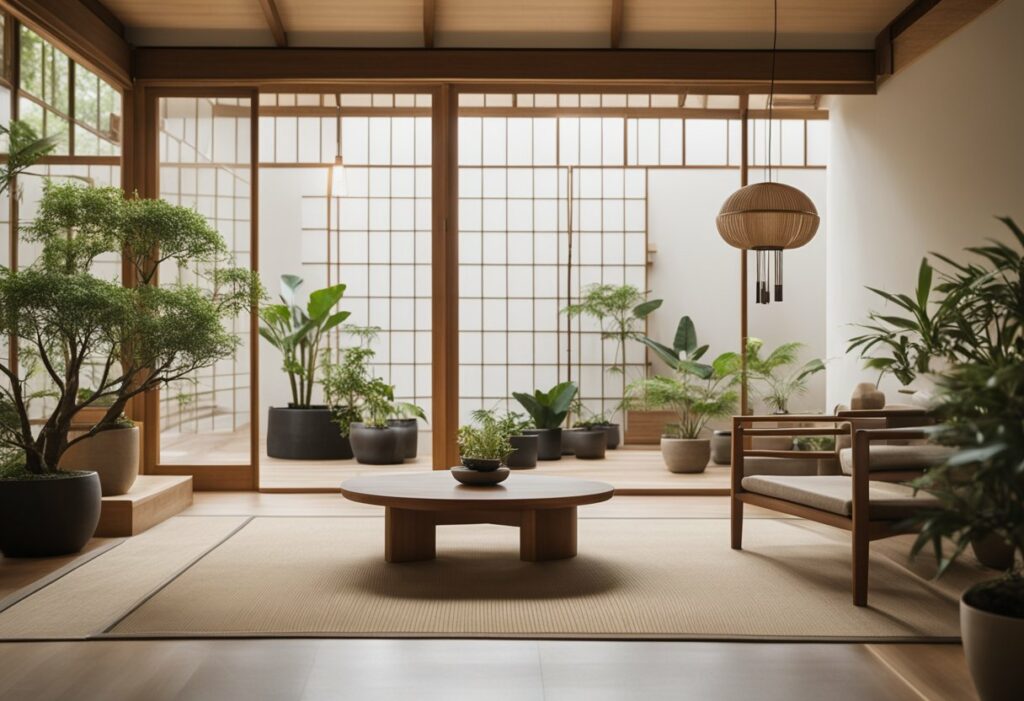Zen Interior Design: Creating a Calming and Peaceful Home Environment
Zen interior design is a minimalist approach to home décor that focuses on creating a peaceful and calming environment. It is inspired by the principles of Zen Buddhism, which emphasises the importance of tranquility, harmony, and balance. If you’re looking to create a space that promotes relaxation and inner peace, then Zen interior design might be just what you need.

The fundamentals of Zen interior design are based on simplicity, natural materials, and a neutral colour palette. The goal is to create a space that is clutter-free, with a few carefully chosen pieces of furniture and décor. The use of natural materials such as wood, stone, and bamboo is also an important aspect of Zen interior design, as it helps to create a connection with nature and promote a sense of calm.
Key Takeaways
- Zen interior design is a minimalist approach to home décor that focuses on creating a peaceful and calming environment.
- The fundamentals of Zen interior design are based on simplicity, natural materials, and a neutral colour palette.
- Creating a Zen space involves decluttering, incorporating natural materials, and using a few carefully chosen pieces of furniture and décor.
Fundamentals of Zen Interior Design

If you are looking for a home decor style that promotes peace and tranquillity, then Zen interior design might be the perfect fit for you. Inspired by Zen philosophy, this style focuses on simplicity, natural elements, and the promotion of a serene environment. In this section, we will explore the fundamental principles of Zen interior design.
Zen Philosophy and Principles
Zen philosophy is rooted in Buddhism and emphasises the importance of mindfulness, simplicity, and the natural world. Zen interior design draws on these principles to create a space that is calm, peaceful, and free from clutter. To achieve this, it’s important to declutter your space and only keep items that are essential. This will help you to create a space that is free from distractions and promotes relaxation.
Incorporating Natural Elements
One of the key principles of Zen interior design is the use of natural elements. This includes materials such as bamboo, wood, stone, and natural fabrics like linen, cotton, and wool. These materials bring a sense of the natural world into your home and help to create a space that is calming and peaceful.
When it comes to lighting, it’s important to use natural light as much as possible. This means maximising the amount of natural light that enters your home and avoiding harsh artificial lighting. You can also incorporate natural elements into your lighting design by using paper lanterns or bamboo shades.
Colour Palette and Textures
The colour palette in Zen interior design is typically neutral and subdued. This includes shades of beige, grey, and white. These colours create a calming and peaceful environment and allow the natural elements in your home to take centre stage.
Textures are also an important part of Zen interior design. This includes natural textures like wood grain, stone, and woven fabrics. These textures add depth and interest to your space without overwhelming it.
In conclusion, Zen interior design is a style that is all about simplicity, natural elements, and creating a space that promotes peace and tranquillity. By incorporating natural materials, maximising natural light, and using a subdued colour palette, you can create a space that is calm, peaceful, and free from distractions.
Creating a Zen Space

To create a Zen space, you need to focus on creating a calming and harmonious environment that promotes relaxation and well-being. Here are some tips to help you create a Zen space that will help you find peace and tranquillity.
Furniture and Layout
When it comes to furniture and layout, you should aim for simplicity and functionality. Choose furniture pieces that are comfortable and have clean lines. A platform bed is a great option for a Zen bedroom, as it provides a minimalist design that promotes relaxation. You should also consider the layout of your furniture, making sure that there is enough space to move around freely and that the room is not cluttered.
Decluttering for Serenity
Decluttering is an essential part of creating a Zen space. You should aim to keep your space clean and tidy, with only the essential items on display. This will help to create a sense of calm and serenity, promoting relaxation and well-being. You can also use storage solutions to keep your items out of sight, reducing visual clutter and creating a more peaceful environment.
Zen Accents and Decor
When it comes to Zen accents and decor, you should aim for natural materials and neutral colours. Zen decor includes natural materials such as wood, stone, and bamboo, which provide a sense of texture and warmth to your living space. You can also use soft furnishings such as pillows and curtains to add comfort and softness to your space. Sconces and floor lamps can also provide soft light, creating a relaxing atmosphere.
Adding plants to your space is also a great way to promote relaxation and well-being. Potted plants can help to purify the air, and green plants can add a sense of calm and tranquillity to your environment. You can also add a Buddha statue or a Zen garden to your space, promoting mindfulness and balance.
In summary, creating a Zen space is all about promoting relaxation and well-being. You should aim for simplicity, functionality, and natural materials, while also decluttering your space and adding Zen accents and decor. By following these tips, you can create a space that promotes peace, tranquillity, and balance.
Frequently Asked Questions

How can I infuse my home with a sense of Zen tranquillity?
To create a Zen-inspired interior, start by decluttering your space and adopting a minimalist approach to design. Incorporate natural materials, such as wood and stone, and include plenty of greenery to promote a sense of calm. Use soft, neutral colours, such as white, beige, and grey, to create a peaceful atmosphere.
What are the key elements to include in a minimalist Zen-inspired space?
A minimalist Zen-inspired space should include natural materials, such as wood and stone, and plenty of greenery. Use soft, neutral colours and incorporate natural light to create a peaceful atmosphere. Avoid clutter and unnecessary decorations, and focus on creating a sense of balance and harmony.
Could you suggest ways to incorporate Zen principles into a modern living area?
To incorporate Zen principles into a modern living area, focus on creating a sense of balance and simplicity. Use natural materials, such as wood and stone, and incorporate plenty of greenery. Use a minimalist approach to design, and avoid clutter and unnecessary decorations.
What distinguishes Japanese Zen design from other minimalist design approaches?
Japanese Zen design is characterised by a focus on nature and simplicity. It emphasises the use of natural materials, such as wood and stone, and incorporates greenery to create a sense of calm. Japanese Zen design also places a strong emphasis on balance and harmony.
How does Zen interior design harmonise with Scandinavian style influences?
Zen interior design and Scandinavian style both emphasise simplicity and natural materials. They both use a minimalist approach to design and incorporate plenty of greenery. Zen interior design also places a strong emphasis on balance and harmony, which is in line with Scandinavian design principles.
In what ways can Zen design principles promote relaxation and peace in interior spaces?
Zen design principles promote relaxation and peace by creating a sense of balance and harmony in interior spaces. Using natural materials and incorporating greenery can help to create a calming atmosphere. A minimalist approach to design can also help to reduce clutter and create a sense of simplicity, which can promote relaxation and peace.



